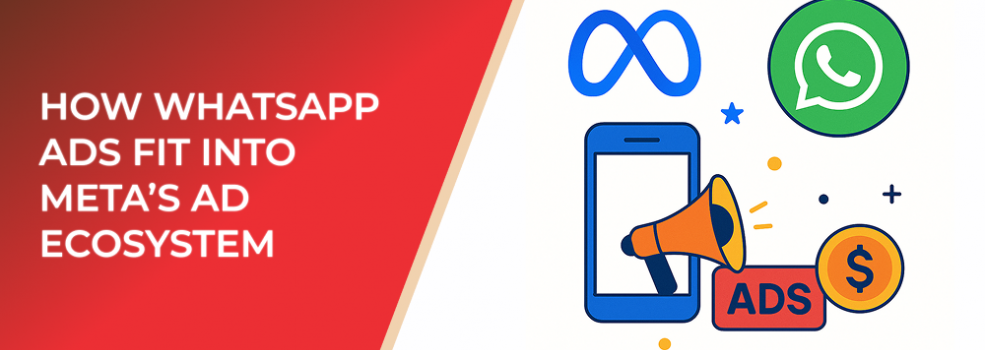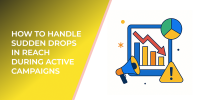For years, Facebook and Instagram have been the backbone of Meta’s ad revenue. But as privacy regulations tighten and user behavior shifts toward messaging, WhatsApp Ads are emerging as a powerful new channel in the Meta ecosystem.
Advertisers who understand how WhatsApp connects with Meta’s existing platforms can unlock more personalized, conversion-focused campaigns that build real relationships—not just impressions.
Why Meta Is Pushing WhatsApp Ads
With over 2.7 billion active users globally, WhatsApp is the world’s most popular messaging app. Yet, until recently, Meta hadn’t fully monetized it. The platform’s ad products—like Click-to-WhatsApp Ads—bridge the gap between discovery and direct conversation.
Instead of driving users to websites or landing pages, these ads open a WhatsApp chat directly, allowing businesses to connect instantly with potential customers.
Meta’s strategy is simple: make its ad ecosystem more conversational. As users spend more time messaging and less time browsing feeds, Meta wants advertisers to follow.
The Role of Click-to-WhatsApp Ads
Click-to-WhatsApp Ads are currently the most widely used ad format within WhatsApp’s ecosystem. They appear across Facebook and Instagram feeds, Stories, and Reels, and when tapped, they open a WhatsApp chat with the business.
According to Meta’s internal data, brands that use Click-to-WhatsApp Ads can see up to 30% higher conversion rates compared to traditional lead form campaigns. That’s because conversations shorten the customer journey—questions are answered, trust is built, and actions are immediate.
These ads are particularly effective for service providers, e-commerce businesses, and local brands that rely on fast communication to close sales.
Integration Within Meta’s Ecosystem
Meta has been merging its platforms to make advertising seamless across all its properties:
-
Unified Campaign Management: You can create and track WhatsApp Ads directly from Meta Ads Manager, just like Facebook or Instagram campaigns.
-
Cross-Platform Targeting: Audience insights from Facebook and Instagram feed into WhatsApp campaigns, making targeting more precise.
-
Retargeting Capabilities: Advertisers can retarget users who messaged their business or engaged with ads, creating a full-funnel experience.
This unified system allows advertisers to use one campaign strategy across multiple touchpoints—from awareness on Instagram to conversation on WhatsApp and retargeting on Facebook.
Why WhatsApp Ads Matter for Advertisers
-
Direct Engagement – WhatsApp offers the highest open rates of any Meta platform, with 98% message open rates on average.
-
Personalized Experience – Messaging feels human. Businesses can answer questions, share catalog items, and nurture leads one-on-one.
-
Global Reach – In regions like India, Brazil, and parts of Europe, WhatsApp is the default communication channel—making it essential for brands targeting international markets.
-
Automation Opportunities – With the WhatsApp Business API, companies can automate responses, confirmations, and even entire sales conversations.
Challenges and Considerations
Despite its promise, WhatsApp Ads come with some trade-offs:
-
Limited Creative Options: Ads primarily rely on Meta’s other platforms for placement and discovery.
-
Manual Engagement Requirements: Businesses need to respond promptly—delayed replies can kill conversions.
-
Compliance Complexity: Data privacy and message consent laws vary by country, requiring careful setup of business policies.
Still, these challenges can be mitigated with proper planning and automation.
The Future of WhatsApp in Meta’s Ad Network
Meta is investing heavily in AI-driven chat automation and in-app shopping tools for WhatsApp. Soon, users may browse and buy products entirely within the app—just like they already do on Instagram Shops.
This integration will make WhatsApp a critical step in Meta’s ad funnel: discovery on Facebook or Instagram, engagement through messaging, and purchase completion within WhatsApp.
In short, WhatsApp isn’t replacing Facebook Ads—it’s completing them.
Final Thoughts
WhatsApp Ads represent a shift from clicks to conversations. They bring human interaction back into digital marketing, which can drastically improve conversion rates and customer satisfaction.
For advertisers who want to stay ahead, the time to integrate WhatsApp into Meta’s ad ecosystem is now. The brands that build personal, message-based customer journeys will likely dominate the next phase of social advertising.
Suggested reading:

